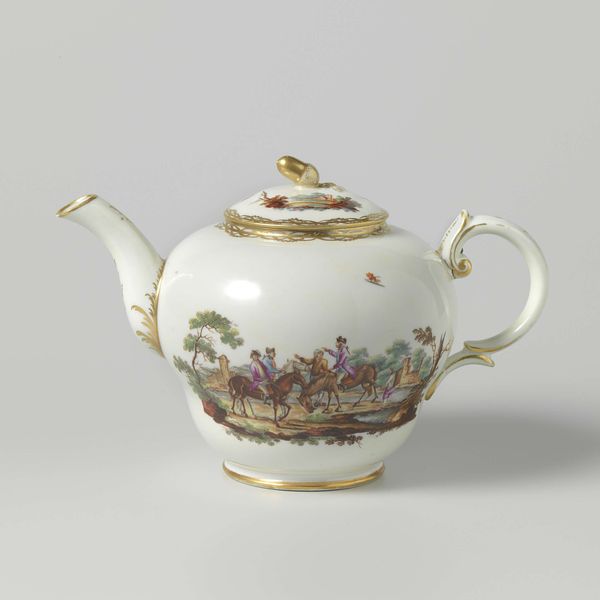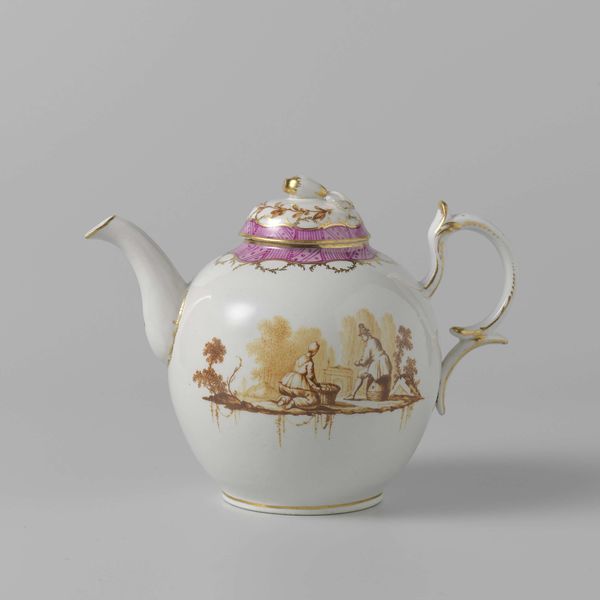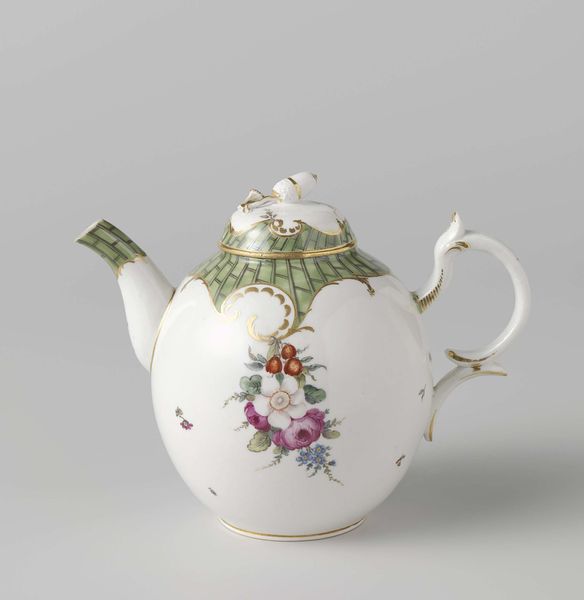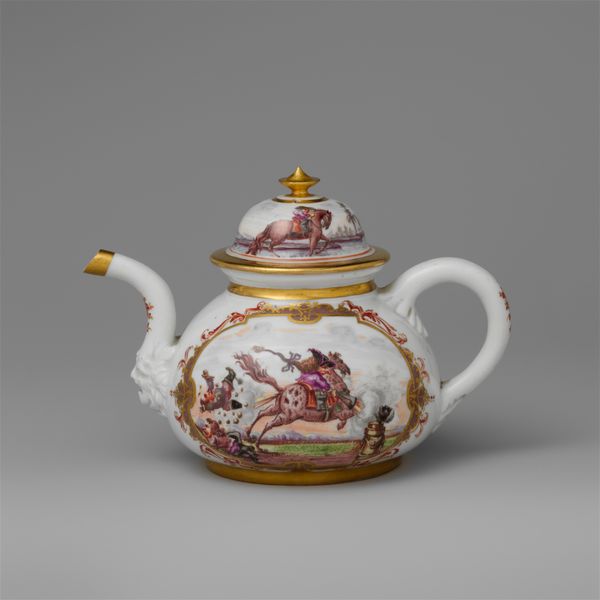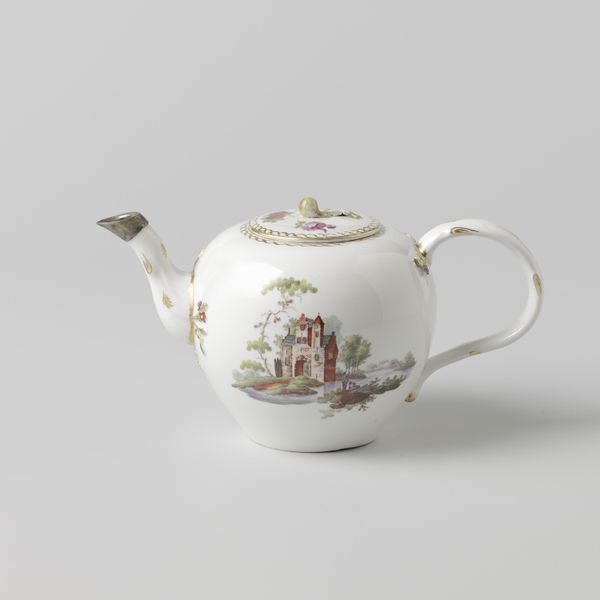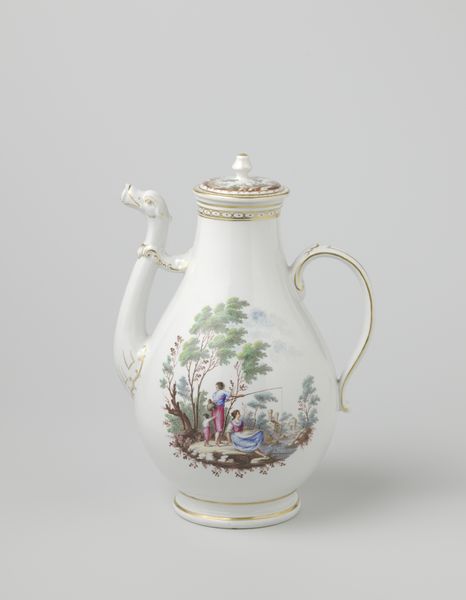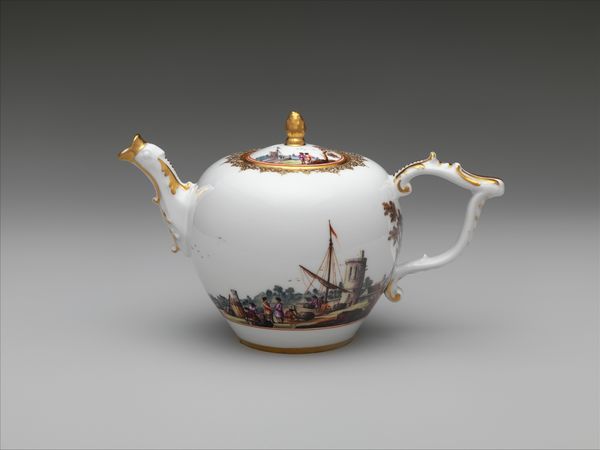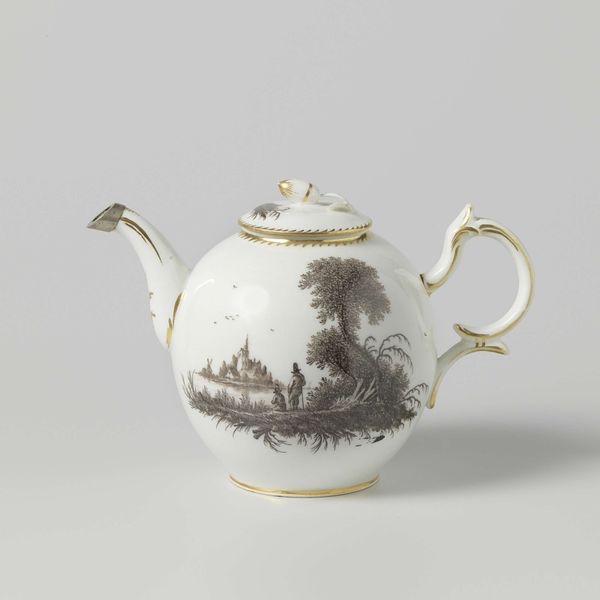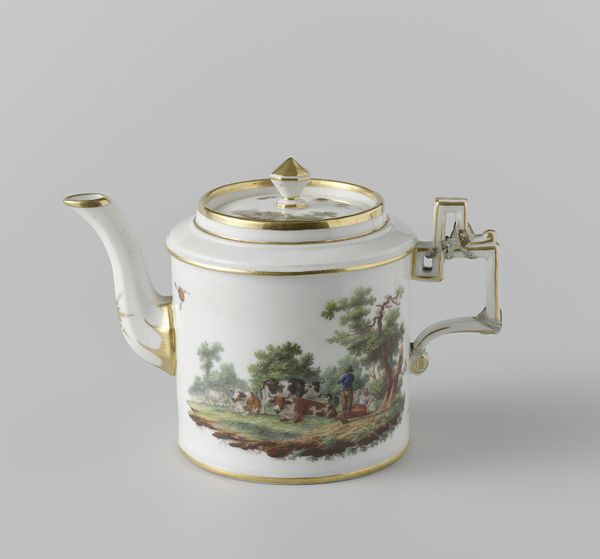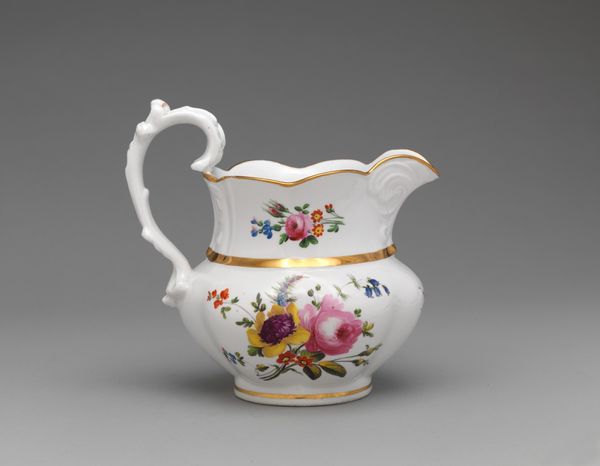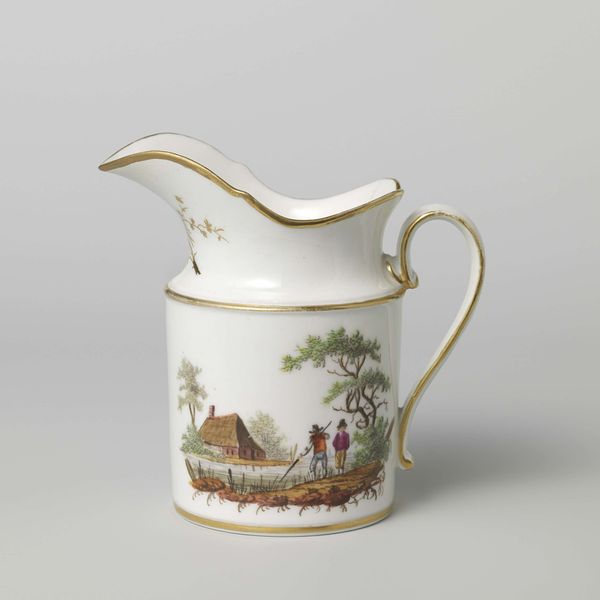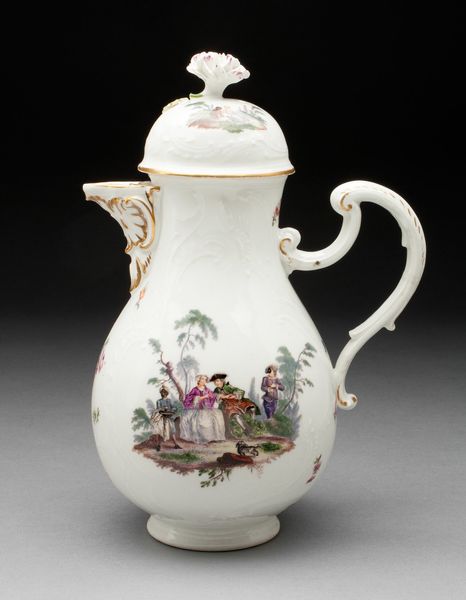
Dimensions: height 12.4 cm, width 17.8 cm, diameter 10.8 cm
Copyright: Rijks Museum: Open Domain
Editor: This is "Part of a coffee and tea service" made around 1778-1782 by Loosdrecht. It is stoneware painted with landscape scenes, and is currently held in the Rijksmuseum. The teapot has such a delicate Rococo sensibility... it feels both functional and precious. What draws your attention about it? Curator: As a materialist, I immediately look at the context of production. Consider Loosdrecht. They were trying to mimic true porcelain using local materials. That pursuit is fascinating! Editor: Fascinating! In what sense? Curator: Think about it. They weren't just creating an object; they were participating in a social and economic system. What materials did they use? Where did they source them? Who was involved in the manufacturing? These are all important questions. The ceramic material and the painting... these aren't separate considerations from the scenes they portray. How does the aristocratic landscape ideal on the teapot speak to its intended use in the rituals of consumption, class and empire? Editor: That's really insightful. It challenges the idea of purely aesthetic appreciation. What are your thoughts on the function of decorative art beyond mere aesthetics? Curator: These objects were embedded in networks of power, trade, and social status. Analyzing their material composition reveals a lot about those connections, more so perhaps than if it was ‘just’ a painting, disconnected from the everyday. What did this service mean for its commissioner? Editor: I never thought of it that way. Now, I’m more curious about where the materials originated and how the artisans shaped them in response to those constraints. Thank you! Curator: My pleasure. Examining those factors truly enriches our understanding and challenges conventional assumptions.
